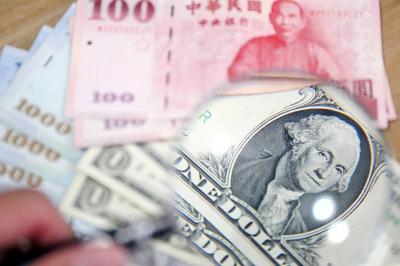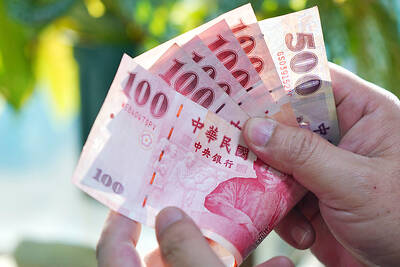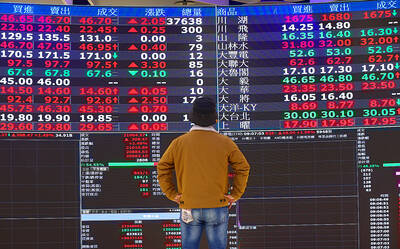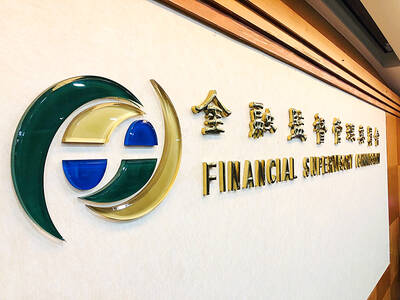The US dollar had its biggest weekly rise in 11 against both the euro and the yen on speculation accelerating US inflation will force the Federal Reserve to raise its interest-rate target more than anticipated.
Demand for the US currency increased this week as the Fed boosted borrowing costs by a quarter percentage point for a seventh time since June. The yield on 10-year US Treasury notes rose to the highest since June, adding to the attractiveness of the dollar.
"The dollar is gathering momentum," said Takako Masai, head of foreign exchange and derivative sales in Tokyo at Calyon, the investment banking unit of Credit Agricole SA. "The theme of this market is a widening US rate advantage. People are pushing up expectations on the Fed's action this year."
The US dollar was at ?106.4 at 5pm in New York, from ?106.31 late on Thursday, according to electronic currency dealing system EBS. It was also at US$1.2960 per euro from US$1.2940. The dollar gained 2.8 percent against the euro and 1.6 percent versus the yen on the week, and may gain to ?108 and US$1.25 per euro in the next three weeks, Masai said.
Financial centers including Hong Kong, Singapore, London, Frankfurt and New York were on holiday on Friday.
Traders are increasing bets on the extent to which US rates will rise. Eurodollar futures contracts show traders and investors expect the Fed to raise its benchmark rate to at least 4 percent by the end of this year, from 2.75 percent, after the central bank on March 23 noted "pressures on inflation have picked up."
The December Eurodollar futures contract yields 4.315 percent, up from 3.905 percent a month ago. It settles at a three-month lending rate that has averaged about 0.21 percentage point higher than the Fed's target rate in the past 10 years.
Gains in the dollar may be limited by speculation the rally will prompt some investors to bet the advance is excessive.
A technical indicator suggested the dollar is poised to fall. Its 10-day relative strength index against the euro fell to 26.26, and against the yen was at 73.5. The index is a gauge of momentum in a given period, and a level above 70 or below 30 suggests a change in direction.
"The long weekend in Europe and the US will keep the market quiet, making it more likely the dollar will take a break from its rally," said Tetsu Aikawa, a currency sales manager in Tokyo at UFJ Bank Ltd. "The run-up has been fast enough to trigger concerns of a pause."
Citigroup Inc, the biggest financial services company, advised selling the dollar against the euro as it contested the view that the Fed is more likely to raise interest rates in larger increments this year.
"We disagree with this interpretation of the Fed's statement and disagree with the view that a 50 basis point tightening is more likely," Steven Saywell, chief currency strategist in London at Citigroup, wrote on Thursday in a report. The bank expects the dollar to drop to US$1.3670 per euro.
The Fed's benchmark rate exceeds the European Central Bank's key rate by three quarters of a point, the biggest gap since March 2001. The next US policy-setting meeting is May 3.
The US next week is forecast to say the economy added more than 200,000 non-farm jobs for a second month in March, according to a Bloomberg survey of economists.
US consumer prices rose 0.4 percent last month, the most in four months and more than the 0.3 percent median forecast in a Bloomberg survey of economists, the government said on March 23. A US Labor Department report the day before showed wholesale prices rose for a second month last month.
"The dollar's upward trend is going to continue," said Toru Umemoto, market analyst in Tokyo at Keio University's Global Security Research Center. "Yields are rising, and the US economy is strengthening. All of this is dollar supportive."

The US dollar was trading at NT$29.7 at 10am today on the Taipei Foreign Exchange, as the New Taiwan dollar gained NT$1.364 from the previous close last week. The NT dollar continued to rise today, after surging 3.07 percent on Friday. After opening at NT$30.91, the NT dollar gained more than NT$1 in just 15 minutes, briefly passing the NT$30 mark. Before the US Department of the Treasury's semi-annual currency report came out, expectations that the NT dollar would keep rising were already building. The NT dollar on Friday closed at NT$31.064, up by NT$0.953 — a 3.07 percent single-day gain. Today,

‘SHORT TERM’: The local currency would likely remain strong in the near term, driven by anticipated US trade pressure, capital inflows and expectations of a US Fed rate cut The US dollar is expected to fall below NT$30 in the near term, as traders anticipate increased pressure from Washington for Taiwan to allow the New Taiwan dollar to appreciate, Cathay United Bank (國泰世華銀行) chief economist Lin Chi-chao (林啟超) said. Following a sharp drop in the greenback against the NT dollar on Friday, Lin told the Central News Agency that the local currency is likely to remain strong in the short term, driven in part by market psychology surrounding anticipated US policy pressure. On Friday, the US dollar fell NT$0.953, or 3.07 percent, closing at NT$31.064 — its lowest level since Jan.

The New Taiwan dollar and Taiwanese stocks surged on signs that trade tensions between the world’s top two economies might start easing and as US tech earnings boosted the outlook of the nation’s semiconductor exports. The NT dollar strengthened as much as 3.8 percent versus the US dollar to 30.815, the biggest intraday gain since January 2011, closing at NT$31.064. The benchmark TAIEX jumped 2.73 percent to outperform the region’s equity gauges. Outlook for global trade improved after China said it is assessing possible trade talks with the US, providing a boost for the nation’s currency and shares. As the NT dollar

The Financial Supervisory Commission (FSC) yesterday met with some of the nation’s largest insurance companies as a skyrocketing New Taiwan dollar piles pressure on their hundreds of billions of dollars in US bond investments. The commission has asked some life insurance firms, among the biggest Asian holders of US debt, to discuss how the rapidly strengthening NT dollar has impacted their operations, people familiar with the matter said. The meeting took place as the NT dollar jumped as much as 5 percent yesterday, its biggest intraday gain in more than three decades. The local currency surged as exporters rushed to